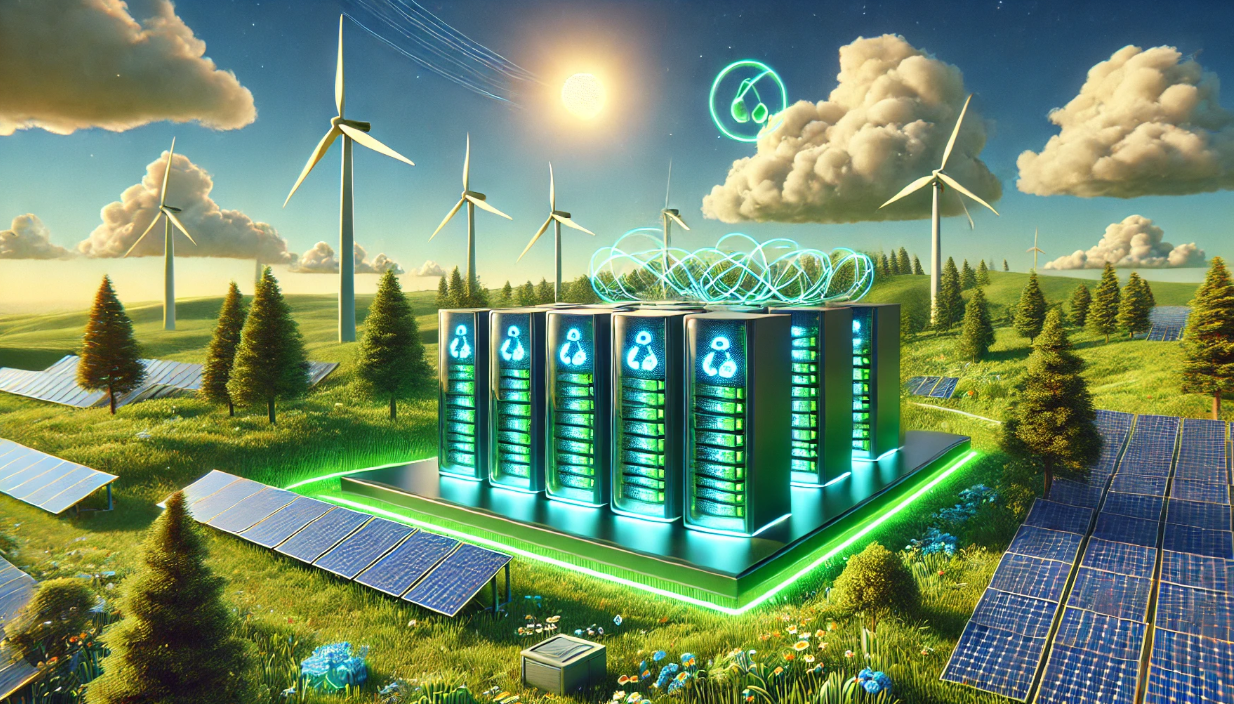The Rise of Green Hosting: How Sustainability Is Shaping the Future of Hosting Services
As the world increasingly prioritizes environmental sustainability, industries across the board are rethinking their practices—and the hosting industry is no exception. Hosting services, powered by energy-intensive data centers, are under pressure to adopt green practices to reduce their carbon footprint. This shift has given rise to green hosting, a movement toward eco-friendly, sustainable hosting solutions that align with growing consumer and business demands for environmental responsibility.
In this blog, we’ll explore the rise of green hosting, the changes data centers are making to reduce environmental impact, and how businesses can benefit from adopting sustainable hosting practices.
What Is Green Hosting?
Green hosting refers to web hosting services that prioritize environmental sustainability by using renewable energy sources, energy-efficient technologies, and eco-friendly practices in their operations. The goal of green hosting is to minimize the environmental impact of hosting services, which traditionally rely on high-energy servers and cooling systems.
Key aspects of green hosting include:
- Using renewable energy sources (e.g., wind, solar) to power data centers.
- Implementing energy-efficient cooling systems and hardware.
- Offsetting carbon emissions through carbon credits or tree-planting initiatives.
- Designing sustainable data centers with reduced energy consumption.
Why Green Hosting Is Becoming Essential
1. Growing Energy Consumption in Data Centers
Data centers are among the largest consumers of electricity globally. According to the International Energy Agency (IEA), data centers account for approximately 1% of global electricity demand—a number expected to rise as internet usage and cloud services grow.
2. Consumer Demand for Sustainability
Today’s consumers are more eco-conscious than ever, with 75% of millennials willing to pay more for sustainable products and services. Businesses that choose green hosting can appeal to this growing demographic and align their operations with their values.
3. Corporate Sustainability Goals
Many organizations have adopted ESG (Environmental, Social, and Governance) initiatives, which include reducing their carbon footprint. Green hosting allows companies to support these goals by ensuring their websites and applications are hosted sustainably.
4. Regulatory Pressures
Governments worldwide are introducing stricter regulations and incentives to reduce carbon emissions. Hosting providers that adopt green practices are better positioned to comply with these requirements and take advantage of green incentives.
How Data Centers Are Going Green
1. Renewable Energy Adoption
Many hosting providers are powering their data centers with wind, solar, and hydroelectric energy to reduce reliance on fossil fuels.
- Google Cloud: Operates on 100% renewable energy and aims to be carbon-free by 2030.
- Amazon Web Services (AWS): Committed to running on 100% renewable energy by 2025.
2. Energy-Efficient Hardware
Green hosting providers are investing in modern, energy-efficient servers that consume less power. Advances in chip technology and low-power processors help reduce overall energy usage.
3. Innovative Cooling Solutions
Traditional cooling systems in data centers consume a significant amount of energy. Green data centers are adopting sustainable cooling methods, such as:
- Liquid Cooling: Using water or non-conductive liquids to cool servers more efficiently than air-based systems.
- Free-Air Cooling: Leveraging outside air to cool servers, reducing the need for energy-intensive air conditioning.
4. Carbon Offsetting Programs
Some hosting providers invest in carbon offset programs to balance their emissions. These programs include:
- Purchasing carbon credits.
- Planting trees or funding reforestation projects.
5. Building Sustainable Data Centers
Eco-friendly data centers are designed to minimize energy use, incorporate renewable materials, and maximize energy efficiency. Some notable examples include:
- Underwater Data Centers: Microsoft’s Project Natick deployed a data center underwater, using seawater for cooling and achieving near-zero emissions.
- Desert-Based Solar Data Centers: Solar-powered data centers in regions with abundant sunlight.
Benefits of Green Hosting for Businesses
1. Enhanced Brand Reputation
Adopting green hosting sends a strong message about your company’s commitment to sustainability. Eco-conscious customers and partners are more likely to trust and support businesses that prioritize environmental responsibility.
2. Cost Savings
While renewable energy and energy-efficient systems require upfront investment, they often result in lower operational costs over time. Hosting providers can pass these savings on to their customers.
3. Regulatory Compliance
By choosing green hosting, businesses can meet current and future environmental regulations, avoiding fines and benefiting from green tax incentives.
4. Competitive Advantage
Sustainability is becoming a key differentiator in many industries. Businesses that prioritize eco-friendly hosting gain a competitive edge over those that don’t.
5. Future-Proofing
As the demand for sustainable practices grows, businesses that adopt green hosting early will be better positioned to thrive in a more eco-conscious market.
Examples of Green Hosting Providers
1. GreenGeeks
- Powers its infrastructure with 300% renewable energy via wind power.
- Actively offsets its carbon footprint and plants trees for every hosting account.
2. SiteGround
- Utilizes Google Cloud’s renewable energy network for its hosting services.
- Optimizes its servers for energy efficiency.
3. A2 Hosting
- Partners with Carbonfund.org to offset carbon emissions.
- Implements eco-friendly data center practices, including energy-efficient hardware.
4. DreamHost
- Operates data centers powered by renewable energy.
- Utilizes high-efficiency cooling systems to reduce energy waste.
How to Choose a Green Hosting Provider
When selecting a green hosting provider, consider the following:
- Energy Sources: Does the provider use renewable energy for its operations?
- Certifications: Look for certifications like Green-e, Energy Star, or partnerships with carbon offset programs.
- Transparency: Does the provider disclose its sustainability practices and goals?
- Features and Performance: Ensure that the provider offers the resources and reliability your business needs.

